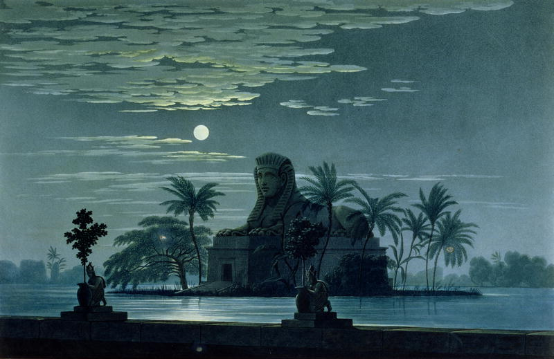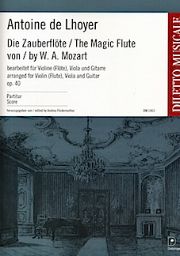"Exotic" cast
13 numbers from the "Magic Flute" in an arrangement from Mozart's time for violin (alternatively: flute), viola and guitar.

The number of buildings made accessible again today Magic flutes-The number of Mozart adaptations from Mozart's time and immediately afterwards is steadily increasing! Mozart's last opera enjoyed increasing popularity at the beginning of the 19th century, even in France, where it was initially received with skepticism. Bourgeois domestic music-making required arrangements for small ensembles, as the fixation on sound carriers did not yet exist. In this way, popular operas were disseminated and "reproduced" in family circles and in the Biedermeier salon.
The present instrumentation with violin (alternatively: flute), viola and guitar is particularly "exotic". The arrangement is by the French guitarist Antoine de Lhoyer (1768-1852), who had an eventful life. The turmoil of the French Revolution led the King's Life Guardsman into Austrian military service. After being wounded several times, he worked as a guitar teacher and composer, first in Hamburg, then in St. Petersburg and, after the fall of Napoleon, back in Paris. He was ennobled and called back into military service, which took him to various provinces in France. In 1830, de Lhoyer lost his military position and also his pension. His musical creativity also dried up at this time. He spent years in Algeria and died in Paris in 1852. De Lhoyer's works, especially the guitar duos, are technically demanding. As a guitarist, he is said to have been at the level of Mauro Giuliani and Fernando Sor.
The present Mozart arrangement, de Lhoyer's Opus 40, was published around 1824 in the context of guitar duos, chamber music with violin and an arrangement of the opera La Dame Blanche by François-Adrien Boieldieu for solo guitar.
The guitar has a Magic flutes-trio does not have an accompanying function throughout. In the overture in particular, it plays its contrapuntal part (the editor Andrea Förderreuther recommends simplifying the main theme for the guitar!) and occasionally takes part in the "conversation" in the tercets.
The keys of the selected 13 parts of the Magic flute do not always correspond to the original. De Lhoyer's source may have been inadequate. The Queen of the Night is completely omitted. The editor has reconciled differences with the original Mozart version and corrected further printing errors. In the score, the flute and violin are listed separately, the flute often in octaves. The vocal text is inserted in the arias and ensembles to show the performers the dramaturgical context and to inspire their imagination. Fingerings for all instruments have been entered, as well as bowings in the string parts.
Anyone who plays in an ensemble with guitar and does not shy away from the challenges of Mozart's fragile music will find what they are looking for in these 13 excerpts from the Magic flute an original addition to the repertoire.
Antoine de Lhoyer: The Magic Flute by Wolfgang Amadeus Mozart, arranged for violin (flute), viola and guitar op. 40, edited by Andrea Förderreuther, Diletto Musicale; score DM 1463, € 28.95; parts DM 1463-ST, € 45.00; Doblinger, Vienna 2016








